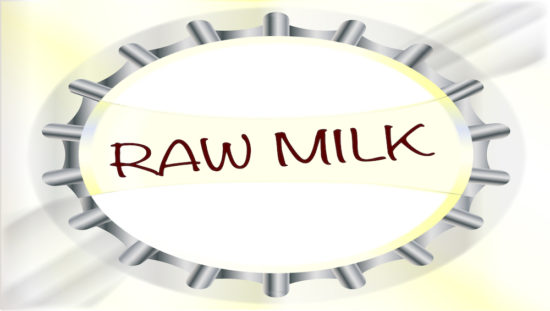
Researchers recommend heating raw milk to kill pathogens
By News Desk on May 12, 2019
Researchers looking at Shiga toxin-producing E. coli and Campylobacter jejuni in unpasteurized, raw milk in Finland have advised heat treatment before consumption.
The study suggested milk filters are more suitable sampling targets for monitoring than milk although pathogen detection from both may be challenging, and that Shiga toxin-producing E. coli (STEC) and Campylobacter may persist in cattle herds for months. Results, published in the journal Applied and Environmental Microbiology, can be used to develop and target pathogen monitoring and risk management at the farm level.
Failure to detect small quantities of STEC and Campylobacter in milk could pose serious health implications as only a few cells may cause infection depending on strain characteristics and host susceptibility. One glass (200 ml) of milk could cause infection with contamination levels seen in the study.
Researchers studied the frequency of STEC O157:H7 and Campylobacter jejuni contamination in tank milk (n = 785) and the in-line milk filters of milking machines (n = 631) versus the frequency of isolation from cattle feces (n = 257) on three Southern Finnish dairy farms for one year. Farm 1 housed 30 cows for pipeline milking in a parlor, while farms 2 and 3 had 60 cows in an automated milking system.
Despite isolation of STEC O157:H7 (17 percent) or Campylobacter jejuni (53 percent) from cattle, these bacteria were rarely isolated from milk filters (2 percent or <1 percent, respectively) and milk (zero).
“More frequent detection of STEC and Campylobacter jejuni from milk filters than milk suggests that pathogen contamination occurred during milking but often could not be detected from the five milk subsamples. Detection was probably hindered by the low concentrations of pathogenic bacteria in the tank milk.”
Raw milk offers ideal growth conditions due to rich nutrients, neutral pH, and high water activity but also exposes bacteria to environmental stresses: rich competing microbiota, bactericidal compounds, and cold storage. Pathogen contamination occurred despite the milk being of good hygienic quality, based on total bacterial counts usually below 50,000 CFU/ml on all three farms.
STEC results
STEC contamination occurred occasionally during milking, especially when fecal shedding was detected.
One STEC O157:H7 strain was detected on each farm and persisted for up to 12 months despite hygienic measures. Campylobacter jejuni strains of a generalist sequence type persisted in the herds for around 11 months, and several others were detected sporadically.
The Shiga toxin (stx) gene carried by STEC was detected more frequently from milk filters (37 percent) than from milk (7 percent).
A questionnaire of on-farm practices suggested lower stx contamination of milk when major cleansing in the barn, culling, or pasturing of dairy cows was applied, while a higher average outdoor temperature was associated with higher contamination.
STEC O157:H7 was isolated from cattle feces on all three farms and infrequently from the barn environment. Fecal samples from milking cows and juvenile cattle were collected between January 2014 and June 2015.
Each farm was sampled for a year: 52 to 53 times for milk and milk filters and 11 times for feces, drinking troughs, and drinking water.
Fecal carriage of STEC O157:H7 had been detected at these sites years or months before the study and farms had since implemented hygienic measures to reduce fecal-oral transmissions.
On farm 1, STEC O157:H7 was isolated only from juvenile cattle in September 2014. On farm 2, the isolation rate from cattle feces gradually decreased from 92 percent to zero between March and July, and no positives were detected after September 2014. On farm 3, STEC O157:H7 was detected in 20 to 50 percent of fecal samples from juvenile cattle from February to May and in all fecal samples from milking cows in July 2014.
On farm 2, STEC O15:H16 was sporadically isolated from feces of milking cows in May 2015. On farm 3, STEC O26:H11 was isolated from cattle feces four times between August 2014 and June 2015 and once from drinking troughs. STEC O84:H2 was sporadically isolated from milking cows in October 2014.
On farm 2, STEC O182:H25 was isolated once from milk filters in October 2014. On farm 3, STEC O121:H19 was isolated once from milk in July 2014, and STEC O26:H11 was isolated from five milk filter samples in July to October 2014.
Campylobacter findings
Campylobacter jejuni was isolated only from one milk filter sample and not from milk but was repeatedly isolated from cattle feces with 53 percent of samples positive. This may indicate poor survival in milk and milk filters or an inability to detect the pathogen by standard culture methods.
“Therefore, analysis of milk or milk filters may poorly indicate the risk of campylobacteriosis related to the consumption of raw milk, especially if laboratory analyses are delayed after sampling. This should be considered in the planning of a sampling regime for monitoring,” said researchers.
Stx contamination of milk was reduced by removing milking cows from the herd by culling, major cleansing in the barn, and pasturing of milking cows.
As pathogen contamination occurred despite good hygiene and because detection from milk and filters proved challenging, researchers recommended heat treatment for raw milk before consumption to avoid health risks.
(To sign up for a free subscription to Food Safety News, click here.)











